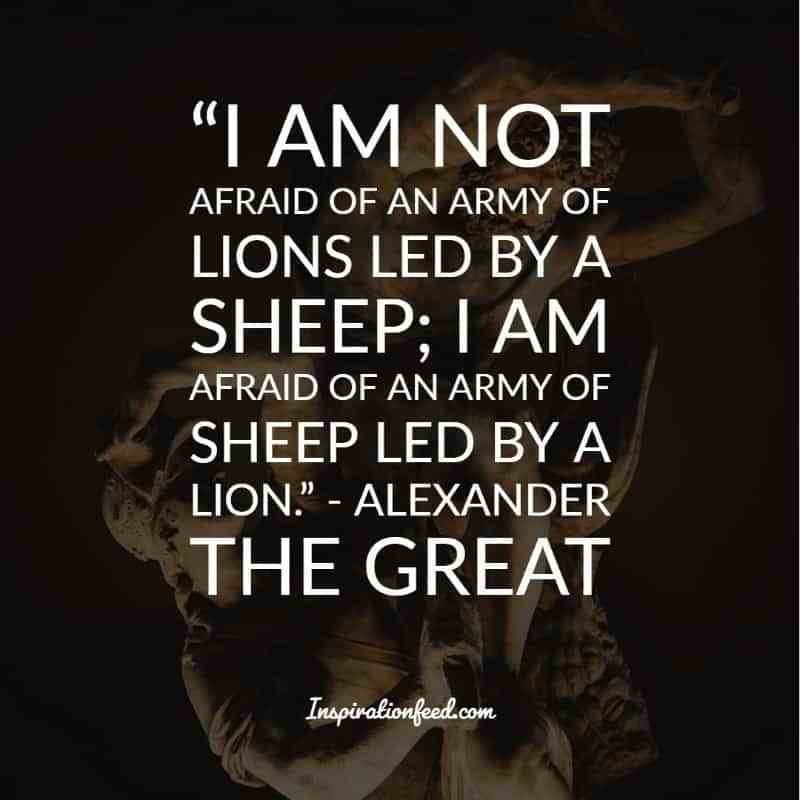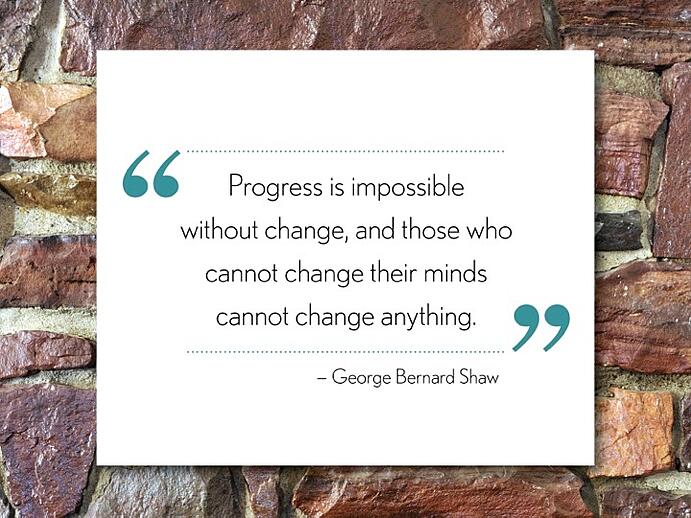Leading From Home
- by Suzanne Bourner
- •
- 21 Apr, 2020
- •

Keeping Your Team on Target
In an ideal world, we all sat down with our teams three weeks ago to establish a clear set of remote-working policies. We developed secure IT protocols, identified optimal communication procedures and rolled out comprehensive training programs. All this in advance of being sent to ‘home offices’ with high speed broadband and posture optimised desk chairs. I have few clients however, no matter how large the organisation, who have had the time to achieve just such an operational panacea, iether for themselves or their employees. Thus, in reaction to current global circumstances, a kind of virtual first aid has been performed within many organisations, with office workers and managers triaging as best they can. Now, as UK companies plan for extended remote operation, it is important that the hastily applied band aid will adhere for a prolonged period. This article considers how leaders can maintain the performance of their organisations most important asset, past the next month and back to business as we remember it. Perhaps even, better than we remember it.
We briefly consider herein the most relevant research based actions offered by occupational and neuropsychology which may be utilised to ensure sustained productivity whilst working remotely from home. The first section briefly takes stock of the past three weeks ‘virtual’ challenges in leading teams from home and the major factors which have made remote work especially demanding. We then consider how studies in psychological fields have sought to effectively remedy these virtual problems.
THE CHALLENGES
Reduction in supervision and managerial interaction
Managers often worry that employees will not work as hard or as efficiently if unsupervised at a remote location. Employees on the other hand, are usually concerned that reduced managerial support can result in their leaders becoming out of touch with their duties and needs. The former of these concerns should be placed towards the back of your to do list over the next few weeks. Recent (2019) research supports the concept that those working remotely with decreased supervision over time, depending on industry, often prove to be more productive. We are thus urged by the statistics to focus our efforts regarding this particular concern, upon how managers can best continue to support and maintain effective interaction with their teams.
Difficulties in sharing information
During the initial stages of remote working, getting answers to what should be simple questions can seem disproportionately difficult. This is a dynamic which usually represents less of a task related theme and is more based on interpersonal communication. For example, a coworker who is aware via daily interaction that their colleague is having a tough time or experiencing personal challenges, is more likely to view an uninformative or curt email as a by-product of their personal situation. Remote working can however encourage a narrower perspective of co-workers professional behaviour, on the basis that there is no mutual exposure to each others circumstances. Psychologists understand this concept as the ‘mutual knowledge problem’ which highlights the increased importance of promoting not only effective communication, but also social interaction on a remote level. Similar difficulties are also ascribed to our innate tendency as pack animals to automatically assign either an ‘in-group’ or ‘out-group’ status to other individuals. Research suggests that where we identify co-workers (potentially through sub-optimal interpersonal techniques) as ‘out-group’ we are more likely to misconstrue or act defensively during professional transactions.
Increased Anxiety
Qualitative studies show that a shift in environment can temporarily increase feelings of stress and physical tiredness. Indeed, several of my clients have reported feeling utterly exhausted and 'out at sea' during recent weeks of working at home. This could of course be due to a myriad of factors, including financial concerns, stressful environmental noise (kids), physical illness or domestic emotional challenges. New environments and a change in our daily activity are however well known to cause increased activity in parts of the brain we might not usually use. This often results in feeling more tired than usual, just as we would if we suddenly started doing a different set of excercises at the gym. The reason for this is that a surprisingly large proportion of our daily activities, from making our first coffee at the office to getting our lunch, are neatly committed to a subcortical structure known as the basal ganglia. This area and related structures act as the brains autopilot, responsible for amongst other things, habit learning. In allowing us to file away large amounts of familiar behaviours, other brain structures are left to deal more effectively with new or cognitively demanding tasks. Whilst our brains are very much designed to develop new neural pathways one day and cast them aside the very next, new tasks and environments will be processed in a less energy efficient way than our ritualistic ones are. Even if it is in our own homes.
Environmental distractions
It’s spring time, the windows may be open, the radio on and the joys of ‘remote schooling’ may well not be making for a harmonious work environment. No matter how experienced or adept we may be at multitasking or functioning in busy places, remote workers need dedicated workspace and adequate childcare to be effective. As an old hand at remotely finalising deals whilst reheating spaghetti and confiscating a nerf gun, I can begrudgingly attest to this impacting my performance over an extended period. Sadly a text book work environment at home is virtually impossible and a good manager will understand and accept that a sudden transition to remote work means that their employees will be operating in some rather make-shift environments.
Social withdrawal
There are various aspects of this hurdle. Some industries are more people focused and contain a larger number of extraverts and socially dependant personalities than others. Withdrawal from the motivation, affirmation and encouragement of co-workers, or indeed from the competition element, can tangibly impact an individuals morale and productivity. Employees can sorely miss those informal interactions, not to mention the advantage afforded by face to face negotiation. My own working style was forged in the organised chaos of the Lloyds Underwriting Room. We would perch, chat and negotiate contracts face to face with between 5 to 35 brokers and underwriters on any given day. Those who lead a crew of extraverts within an industry which comprises an integral element of social interaction such as this, are likely to experience demotivation in the short term. In the long term, research suggests that isolation can impact employees sense of ‘alignment’ and ‘belonging’ with their organisation, which in turn has been seen to impact retention of valued team members.
Similarly but irrespective of the sociability of particular industries, studies highlight that ‘mutual knowledge’ is also a significant contributor to the effects of social isolation. Without realising or consciously ‘coding’ for it, we overhear telephone conversations, are exposed to office chitchat and process emotional subtleties through tone of voice and body language. This allows for employees in an office space to empathise and share understanding of each others emotional or personal circumstances. After a few weeks of remote working however, our reactions will have ceased to allow for such factors.
Similarly, office spaces permit a greater array of positive social opportunities or pleasantries. If I witnessed (or was the recipient of) a cup of tea being gifted by the perpetrator of a previously rude or abrupt email - all might be forgiven. Humans are social creatures and negative bias is easily arrived at during isolation. We’ve all assumed a negative mindset at some time towards a person due to a slightly punchy email. After a few moments talking to the same person however, we are often somehow able to see the very same email in rather a different light. Our out-group categorisations are regularly re-calibrated to in-goup in an office setting. Opportunities to reconnect with co-workers or to re-affirm in-group status can however be rare when a team shifts from an office environment to a virtual one, inducing negative behavioural habits.
THE SOLUTIONS
Unless they have a well trained coach, a therapist, or a particularly enlightened partner, it is unlikely that many of your busy executives will have considered for themselves the potential productivity pitfalls associated with remote working. So how can we continue to support our teams through a sudden and extended move to remote working environments? Here are some of the most relevant empirically researched suggestions, which target the aforementioned challenges.
Initiate purely social interaction opportunities
At the risk of making what should be spontaneous fun into something uncomfortably clinical, studies support the importance of setting time aside for ‘informal conversations about non-work topics’ particularly in a remote setting. To some this comes naturally. To others it is agony - until it becomes the norm. Perhaps ‘empower’ your teams social butterfly (you know who that is) to organise this on a regular basis and ask all to attend. Whilst all teams need to take time to reconnect together, it's absolutely vital for the efficacy of highly social or extravert teams who have been abruptly separated and removed from their daily routines.
Some authors suggest that the simplest way to establish basic social interaction remotely is to make some time at the end of team calls just for non-work items. One of my clients likes to organise specific virtual 'drinks' meetings as separate on line events. Her assistant organises “care packages” often including takeaway food such as ice cream or popcorn to be sent to the teams individual virtual work locations, and all packages are opened during the conference call, simultaneously. To the inexperienced remote worker, these approaches inevitably sound awkward and contrived. However, research examining experienced managers of remote workers and remote workers themselves report that virtual events help reduce feelings of isolation and promote a sense of belonging.
Establish and stick to a routine
Having a disciplined daily routine will not only help you manage your daily tasks better, but will also help you feel less tired and stressed. The quicker we can develop a routine, the quicker we will commit a larger part of our daily activities to the basal ganglia, thus freeing up resource for trickier tasks. Timetabling a beginning and an end time to your day is an important start. Whilst your family may have some raised eyebrows, carry out the same activities, in the same place every morning. Wake and shower at the same time, get dressed in the same place, eat the same food and listen to the same radio station. If you usually go for a run in the morning, then do that. Remember also to include the social rituals you may have. If you are accustomed to a morning chat or meeting friends for lunch - build that into your day via video conferencing. Quite simply, the faster we commit processes to the habit learning region of the brain, the faster we will begin to feel less tired, less stressed and more equipped to deal with more cognitively challenging tasks.
Establish regular and predictable daily check-ins
This may seem like a draconian gesture and these days hugely unwelcome in the face to face world. Meetings can be an excuse to eat biscuits, drink coffee and malinger. In the remote world however, the game has to be played differently. These daily checkins need not be ‘en masse’, but should be a forum aimed at allowing each employee to understand that they do have a space to ask questions and get answers from you, their leader. Not always what you might want, but again - remote life is a different kettle of fish. The flip side of this coin as mentioned above - the concern that many managers have based around lack of supervision contributing to low productivity, is relatively unsupported. In fact research shows the contrary. This measure is thus all about leaders being kept aware of their teams needs and challenges. Whilst you may find yourself spending an extra hour chatting to various employees where you might usually not, the benefits to improving personal interaction will be numerous.
Establish clear methods of communication
Remote work becomes more efficient and satisfying when managers set expectations for the frequency, methods, and timing of communication for their teams. For example, “We use Zoom for daily check-in meetings and client negotiations, email or instant messaging when something is urgent and the team WhatsApp for anything social.” It's also important to let your team know exactly when you are available during the day. In the office, it's usually obvious, or is easily ascertainable where you’ll be. Working from home however there may be other commitments as many people are forced to change their normal routines. In a virtual working environment colleagues cant ask a PA or check the meeting room diary. Quite simply, our schedules may differ from those that we are used to in the office. For example “I’m making myself available to brokers early in the morning, so afternoons work well for internal phone or video conversations. ”. If you’re schedule has not changed from office life, still let your team know for the sake of encouraging open channels, employee comfort factor and clarity. Also remember to encourage team members to develop a healthy comms etiquette and practice. This isn't teaching granny to suck eggs. we all need reminders from to time to time especially around what is essentially a new and continuously evolving technology. It is here that leading by example can reap rewards. The goal is that all employees will be singing from the same hymn sheet as such, and should have the same expectations re communication methods and courtesies. If you have an HR or training department, empower them with this goal.
Make use of the newer, more challenging communication technology options
Whilst everyone in modern times is well versed in email, it is not an efficient substitute for the many forms of communication we assume throughout the business day in the office. Science tells us that we receive vital information from other humans in a variety of ways, one of the most important being visual cues (studies suggest that body language and facial expression account for 55% of communication with adults - far more with children). Thus, whilst video conferencing is often well outside of many of our comfort zones it pays dividends in bringing workers closer to their usual standards of communication performance. Video conferencing thus gives participants many of the visual cues that they would usually use in successful negotiations by facilitating the aforementioned ‘subliminal’ comms which we use habitually during our usual daily conversations. It also allows for increased “mutual knowledge” of coworkers, can eliminate the ‘out-group’ bias and also helps reduce the sense of isolation among teams.
Dedicate more time than usual to ‘listening’.
Various studies over the last 20 years have addressed the impact upon group behaviour of emotional contagion and what is known as the ripple effect. If a leader reacts to sudden ‘goal post move’ by exuding anxiety and panic, then so will their team. Psychological research into the function of mirror neurones supports a significant influence of emotional contagion upon both individual-level attitudes and group processes. Organisationally, employees exposed to positive leadership are consistently seen to exhibit improved cooperation, decreased conflict, and increased perceived task performance. Remember, around 55% of communication is non verbal, so begin with noticing your own reaction. In exploring this dynamic, it is suggested that leaders adopt a dual approach.
Firstly, repeatedly affirm your confidence and trust in your team. This in itself provides a motivating and calming effect on employees, as well as on yourself. PDEs (Public displays of encouragement) may not come easily for the average stiff upper lipped businesswoman, but extraordinary times call for extraordinary measures. Simply telling your team “this is a curve ball, but I know you’ve got this” can inflate chests, raise chins and improve morale more than you might imagine. Secondly, a little empathy goes a long way in a crisis and remember, not everyone is good at change. Whilst it’s not your job to counsel or placate an anxious or unexpectedly floundering employee, a ‘coaching’ style of leadership is shown to be highly motivational during periods of abrupt adaptation. The majority of team members will not own up to struggling with new working environments, to the degree that you may not find out about it until it appears clearly on your balance sheet, or worse, through a reduced client list. One essential question therefore to ask your employees during a team conference call or one on one video call is a coaching style one: “How is this remote work situation working out for you so far?”. A group setting can be effective as strength in numbers can elicit courage and participation, especially if you yourself kick off with one of the challenges you have found. The exact setting however is a call for you to make in the knowledge of personalities present.
This dual approach may thus involve you removing your business hat for a moment. Do not interrupt your team. Once you have heard one or all of the comments, nothing conveys understanding better than following up with “so what I’m hearing today is….”. also try ending your summary with “And how do you see a way forward in this?”. The focal point of this meeting should specifically be to allow your employees to voice their successes and their challenges - specific to the new remote working style, and how they envisage improvement. Do use expressions which naturally fit in with your personality. As this may not be your usual brand of motivation, theres no need to invoke a Tony Robbins style mantra. Simple messages to your team which both acknowledge hurdles and affirm your faith in their overcoming, will achieve results. Many managers are surprised at how colleagues who are given the opportunity to reflect upon their challenges and their wins, will then go on to solve their issues, permanently, by themselves.
The various challenges presented by recent events have amongst other things, given us an opportunity to hone our capacities to adapt. This is not time wasted. Research has provided us with ways to keep our teams on target through periods of intense change. Inarguably, the solutions we devise and implement as a result will now stand our working practices in good stead for the future, far beyond the current crisis.

Research suggests that sparing a thought for your HR Team this quarter may reap disproportionately long term rewards. Over the past few years it's likely that your human resources talent have been busily preparing your company for comparative (in pandemic terms) fripperies. These will have included leaving the EU, attracting the best talent with new ‘woke’ requirements, machine learning and AI based shifts in personnel, to name a few. Of late however, many such tasks will have been sidelined as your HR professionals negotiate the myriad of Covid related complexities. Thus, whilst many well honed human resources teams may appear to be gliding serenely through the water, it's likely that they are paddling furiously beneath. In recent months, alongside the plethora of complex pre-covid challenges brought forth during recent years, your HR professionals will have been equally consumed with the dramatic changes facing the broader post covid landscape of human resources itself.
It was observed in 1809 that long term survival of an organism is dependant predominantly upon its ability to adapt to change. Organisations are no different. A wave of change is inarguably upon corporations and the way they deal with their human element. In response to which, many of our corporate clients are choosing to discard the often ‘auxiliary’ perception of the HR team. Human Resources functions are being driven closer towards the heart of many forward thinking organisations, as leadership begin to heed research supporting that this team of people have the innate ability to empower profitable corporate change. Questions many companies are currently asking themselves include: How prepared is our company for the intensity of corporate reshaping prompted by the current global pandemic? Does our HR team have the tools and breadth of operation it needs to respond to the new specific ‘human’ and ‘remote’ challenges we face? In answering these questions, the following areas of HR ops are pivotal.
Perhaps unsurprisingly, Adecco group has recently found that 75 percent of workers wish to keep the flexibility they have benefited from during the pandemic. More surprisingly however is research suggesting that this new method of professional functioning may actually be of value to employers: Flexible workers are often more engaged and statistically less likely to leave. Now, this is where the real work begins for HR and where their metal is tested. How can your company or team maximise the performance of its professionals whilst not falling foul of the many and well documented pitfalls associated with flexible/ home working? Such snares are summarised by research institutions including The Centre for Evidence Based Management. Studies underline that hazards tend to fall under three main factors highlighted as being vital in a ‘psychologically effective workplace’. These three essential factors are ‘trust’, ‘information sharing’ and ‘social cohesion’. Three constructs which are illusive at the best of times within most organisations and even harder to achieve when the workforce is at home.
It becomes clear then, that some hard graft will be required if we are to cultivate a psychologically effective workplace and reap the aforementioned benefits offered to us by a more a more flexible working environment. HR teams must devise new ways to create drive, innovation, thrust and rapport amongst an organisations greatest asset – its professionals. In recognition of the broadening roles of the oft-pidgeonholed HR team, forward thinking companies are prioritising support for HR executives in their exploration of how to inspire leadership and their teams in this new age. As well as considering the dramatic adaptation which HR is currently attempting to facilitate, daily tasks will also need rethinking. Many will attest for example to the difficulties associated with onboarding where new hires don’t even enter an office. Possibly, Human Resources have never had a more acute part to play in the performance of an organisation than now, when they must consider how to nurture a psychologically effective working culture, remotely.
Another central area to support your HR professionals in, is that of wellbeing. Whilst this concept is by no means new and sits close to the top of many corporate agendas, thanks to Covid this concept has taken on a new level of gravity and functional importance. Before 2020, more employees than ever were suffering from poor mental health. After what is now a year of social isolation, professional upheaval, emotional challenge and financial hardship, our workforce is under more (invisible) pressure than ever. Just as a race car cannot be expected to win with worn parts, our professionals will not outperform the competition when they’re run down and stressed. It is perhaps timely and logical that HR teams also be given the tools they need to offer services which maximise personal growth, professional development and mental wellbeing.
Whether handled via an in-house team or outsourced to an external HR specialist, now is the time for HR professionals to be accurately utilised. Any flippant regard for this fundamental department should as of now be placed firmly in the corporate rear view mirror. Visionary leadership will be required going forward to create the necessary human resource driven adaptations if organisations are to take advantage of the possibilities presented by the new flexible/ remote working culture. Cometh the hour, cometh the HR team...

Whilst workplace stress is receiving a healthy amount of attention these days, a very particular group remain unattended to. For the majority of senior executives, accurate assessment of their own levels of stress continues to be overlooked. A destructive, yet understandable taboo persists amongst corporate leaders in both identifying and addressing their own overwhelming stress. Psychological research attributes this largely to the fact that executives themselves see any such admission as a sign of weakness. From time to time, a manager, HR specialist or an executive coach may pick up on some behavioural signs of severe stress, such as substance abuse, anxiety or severe tiredness. However, unless the intervening professional is either a medical doctor or has psychological training they are unlikely to be equipped to assess masked stress behaviours, let alone effectively encourage acknowledgement of the issue. Furthermore, coaches and HR specialists whilst helpful, are rarely trained in the psychodynamic protocols required to assist the executive in dealing adequately with concealed stress. Thus, senior executives require the support of professionals familiar with the areas in which executive stress often arises, and who are then able to evaluate veiled stress levels and promote self-awareness. Most crucially though, they must be able to do this in a group of people for whom ‘stress’ is simply not a topic for discussion.
Research suggests that the wellbeing of our corporate leaders is being neglected due to an unwillingness and inability to recognise and manage workplace stress. Our industry captains are trained at an early age in the art of concealing imperfections and later on, in obscuring professional struggles. After all, who would respect a leader who admitted to feeling tired, anxious or overworked in today’s competitive corporate environment? Surely a competent leader should be the ‘ideal’, void of all weakness and represent the epitome of strength? It is this common perception which necessitates self-deception and impression management tactics in leaders, and which deters senior professionals from seeking even secretive assistance. It is unrealistic however to expect people to cast off the natural human desire to be led by idealistically strong or perfect executives, or the desire of executives to embody that. We can nonetheless assist leaders in the discreet identification and recognition of this organisational enemy which has been shown to constrain both corporate and personal growth. So why and how should we approach the ‘unnamed scourge’ of the boardroom?
The challenge faced by executives and corporations due to stress is increasing under the perpetually evolving face of global business. Life in the fast lane is more challenging than ever. It now encompasses colleagues who work on opposite sides of the globe, relationships conducted solely electronically, frequent mergers and acquisitions, far flung loved ones and social media which demands a greater portion of our cognitive energy than our actual day jobs. Executives nowadays have a broad burden to bare. Professionals who experience stress related depression and exhaustion are worryingly common and well researched (Nyberg et al., 2015) with awareness raised only periodically by high profile cases such as that of the 2013 suicide of Zurich Financials CEO. No less than five top executives at the largest Swiss financial institutions took their own lives over a period recently of eight years. Understanding and promoting the psychological wellbeing of an organisations top performers not only avoids human tragedy, but also has a profound and more materialistic impact on a company. In 2012 as news was released that the CEO of AkzoNobel went on sick leave due to fatigue and work stress, the company’s shares dropped by 4%. The day his return was announced several months later, share prices rose by 3.7%. Senior executives well-being and health problems inarguably impact not only the support of employees, but also that of shareholders and investors. It’s also no wonder that research by a leading U.S University puts the cost of stress to American business at $344 Billion a year in medical bills and absenteeism. Thus, and as the social taboo surrounding stress in our leaders is not likely to disappear any time soon, stress management can and must be considered in all leadership performance forums. If not, and as history has foretold companies will reap not only human but also corporate misfortune.
As far as the executives themselves are concerned, it has been observed that this group have a tendency to wear ‘stress’ as something of a badge of honour: If you don’t have it, then you are probably not working hard enough. Senior executives have a propensity to acknowledge that stress is there, whilst forbidding themselves from acknowledging its true impact, to themselves or to others. “Got to suck it up” or “All part of the territory”. It is seen as normal for executives to survive on five hours of sleep a night, to be under constant pressure and to be glued to their emails every day of the week. This high performing, highly paid body of workers are thus particularly susceptible to stress and illness, but have neither the social permission, nor the time or self-awareness to identify and to deal with this dynamic. Thus, whilst executive stress is apparently ‘accepted’ it is nonetheless ‘normalised’ which further exacerbates the taboo: “Stress is normal for people like me, everyone else manages, so should I”. So how can performance professionals and leadership development interventions best take this issue in hand, allowing for the social requirement for organisational resistance and self-deception in executives?
Given the above landscape, most executive coaches and HR professionals are ill equipped to deal with executive stress. Performance Psychologists and those extensively trained in mental wellbeing are able to identify stress issues and particularly those relating to self-deception and the unconscious aspects of an individual’s perception at work. For example, research suggests that positive results are achieved through employment of a psychodynamic approach to stress in executives, permitting a more subjective examination of work and wellbeing. In other words, stress is a highly unique experience for each individual and is most effectively analysed when situated in the context of an individuals own life circumstances and experiences. After all, some executives may well enjoy or receive a relative ‘pay off’ from stressful situations. (Driver, 2014, Bricknell, 2010). A challenge, whether it be physical or emotional will include a neurological reaction – an adrenaline rush resulting in a potentially positive emotional sense of accomplishment. Many Police professionals or those in the Military opt to return to intensely stressful scenarios time after time as they profess to receiving emotional reward or subjective benefits to doing so. (Kets de Vries, 2010). So another question which a performance psychologists might ponder is how stress in executives can be harnessed and re-routed down just such a positive, versus a negative path. How can executives be trained to focus their perception of stress towards a mindset more a kin to ‘relishing challenge’ or ‘opportunity for positive change’ rather than ‘fearing failure’ or ‘be afraid of negative consequences’. Any psychology professional experienced in leadership psychology and applied neuroscience will tell you that such cognitive behavioural change is achievable. The potential for altering the pathway and impact of stress in an executive is vast, but only once it’s existence has been acknowledged and assessed.
Whatever the interventions employed in managing behavioural pathways relating to stress in corporate leaders, it is vital that professionals are able to employ tools which assist the executive in the accurate analysis of stress indicators, despite the existence of self-deception, impression management or poor self-awareness. Executive stress effects a group for whom self-deception is a common and often necessary survival technique. Performance psychology consultants will work with organisations to engage the requisite psychodynamic lens in identifying the infamous ‘Dark lord’ of the corporate world. The proper naming of which has a powerful dual benefit: improvement of both organisational performance and the personal wellbeing of a company’s most valued professionals.






